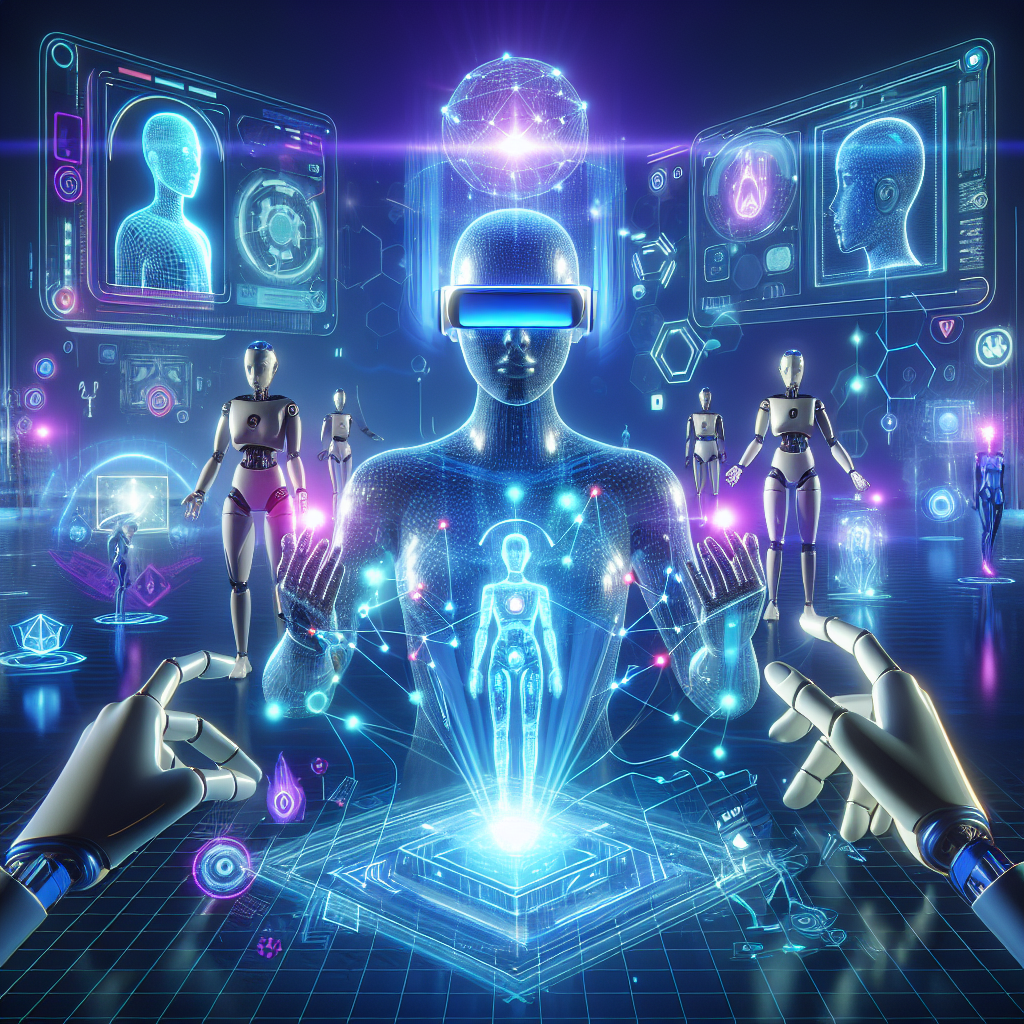The Future of AI in Augmented Reality
Artificial Intelligence (AI) and Augmented Reality (AR) are two rapidly advancing technologies that are poised to revolutionize the way we interact with the world around us. When combined, they have the potential to create immersive and personalized experiences that were once the stuff of science fiction. In this article, we will explore the current state of AI in AR, the potential future applications of this technology, and the challenges that lie ahead.
Current State of AI in AR
AI and AR have already begun to converge in a number of applications, from gaming and entertainment to healthcare and education. One of the most common uses of AI in AR is in computer vision, where machine learning algorithms are used to identify and track objects in the real world. This allows AR devices to overlay digital information onto the physical environment in real-time, creating a seamless and interactive user experience.
AI is also being used to enhance the realism of AR experiences by generating realistic 3D models of objects and environments. This can be particularly useful in fields like architecture and interior design, where clients can visualize how a new building or room will look before it is built. AI can also be used to create more realistic avatars and characters in AR applications, making virtual interactions feel more natural and lifelike.
Another area where AI is making a big impact in AR is in personalized recommendations and content curation. By analyzing user data and behavior, AI algorithms can predict what information or experiences a user is most likely to be interested in and tailor the AR content accordingly. This can lead to more engaging and relevant experiences for users, as well as increased user retention and satisfaction.
Future Applications of AI in AR
The potential applications of AI in AR are vast and varied, and new possibilities are being discovered every day. One area where AI is expected to have a big impact is in the field of healthcare. By combining AI-powered diagnostic tools with AR visualization technology, doctors and surgeons can perform complex procedures with greater precision and efficiency. AR can also be used to help patients better understand their medical conditions and treatment options, leading to improved outcomes and patient satisfaction.
In the field of education, AI-powered AR applications have the potential to revolutionize the way we learn. By creating interactive and immersive learning experiences, students can engage with course material in a more hands-on and experiential way. AI can also be used to personalize the learning experience for each student, identifying their strengths and weaknesses and tailoring the content accordingly. This can lead to better retention and understanding of the material, as well as increased student engagement and motivation.
AI in AR also has the potential to transform the way we work and collaborate. By creating virtual workspaces and meeting rooms, teams can collaborate on projects in real-time regardless of their physical location. AI can help facilitate communication and coordination between team members, as well as automate routine tasks and processes. This can lead to increased productivity and efficiency, as well as reduced costs and overhead.
Challenges and Considerations
While the future of AI in AR is promising, there are still a number of challenges and considerations that need to be addressed. One of the biggest challenges is the ethical and privacy implications of using AI to collect and analyze user data. As AR becomes more integrated into our daily lives, there is a risk that personal information could be misused or exploited. It will be important for developers and policymakers to establish clear guidelines and regulations to protect user privacy and ensure the responsible use of AI in AR applications.
Another challenge is the technical limitations of AI algorithms and AR hardware. While both technologies have advanced rapidly in recent years, there are still limitations in terms of processing power, memory, and battery life. Developers will need to find innovative solutions to optimize performance and efficiency, while also ensuring a seamless and immersive user experience.
FAQs
Q: How is AI currently being used in AR applications?
A: AI is being used in AR applications for a variety of purposes, including computer vision, 3D modeling, personalized recommendations, and content curation.
Q: What are some potential future applications of AI in AR?
A: Some potential future applications of AI in AR include healthcare, education, remote collaboration, and immersive gaming.
Q: What are some of the challenges of using AI in AR?
A: Some of the challenges of using AI in AR include ethical and privacy concerns, technical limitations, and the need for clear guidelines and regulations.
Q: How can developers optimize AI algorithms and AR hardware for better performance?
A: Developers can optimize AI algorithms and AR hardware by finding innovative solutions to improve processing power, memory, and battery life while ensuring a seamless user experience.
In conclusion, the future of AI in AR is bright and full of exciting possibilities. As these technologies continue to evolve and converge, we can expect to see a wide range of new applications and experiences that will enhance our daily lives in ways we never thought possible. By addressing the challenges and considerations outlined in this article, developers and policymakers can ensure that AI in AR is used responsibly and ethically, leading to a more immersive and interactive future for all.

